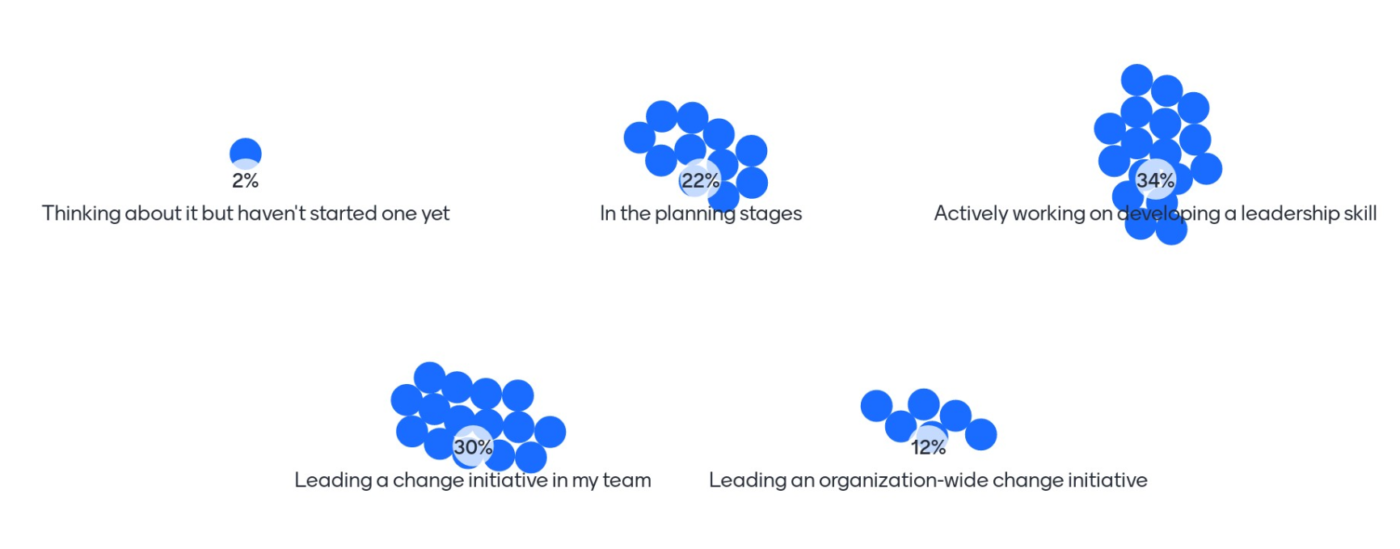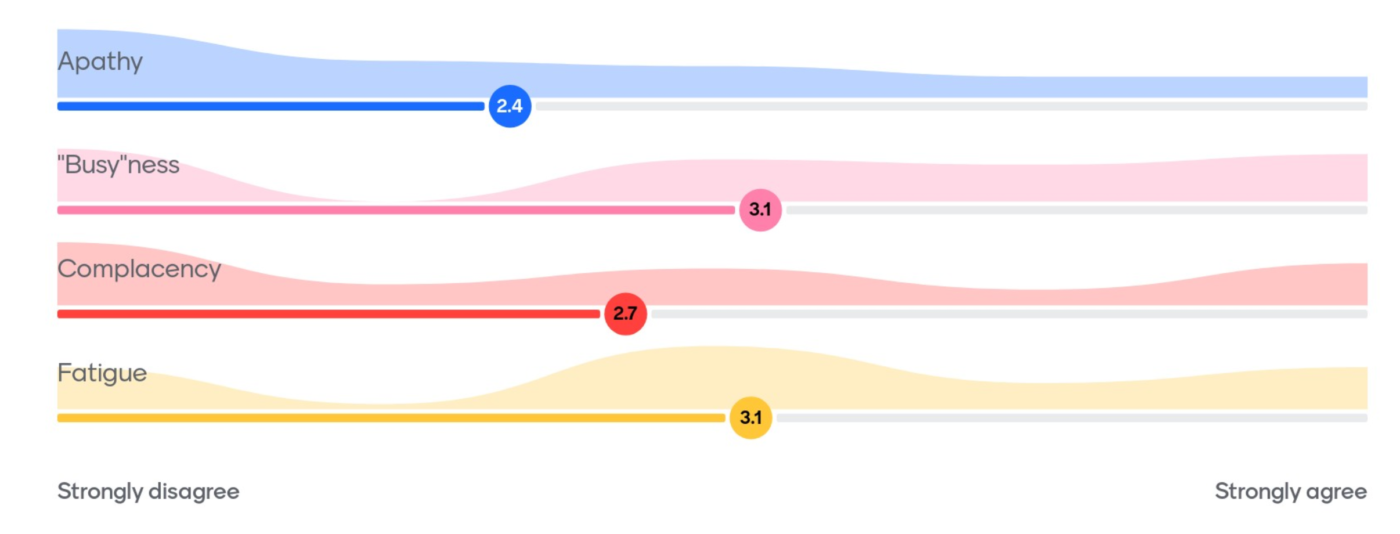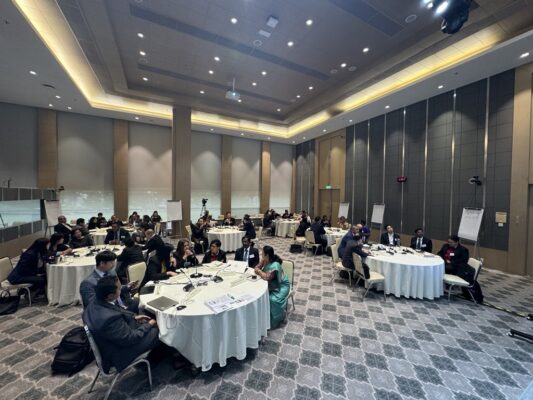Deputy Governor, Corporate Development of the Bank of Thailand Dr. Roong Poshyananda Mallikamas framed the central issue being addressed in our Leading Change course on 26-28 August in Bangkok:
“Today’s financial world is dynamic, complex and constantly shifting.
Digital Transformation, ESG considerations and
paradigm shifts impact our daily work.
As leaders, we must adapt swiftly and strategically.”
Perfectly said: As leaders, we must adapt swiftly and strategically.
Forty-five middle-level central bank leaders from 14 countries accepted DG Roong’s challenge to examine how they are meeting this imperative, and what they could do better: Brunei, Cambodia, Fiji, India, Indonesia, Korea, Laos, Myanmar, Nepal, Papua New Guinea, Philippines, Sri Lanka, Thailand and Vietnam. Participants weighed in frankly on the challenges that they are facing in our dynamic, complex and increasingly digital world. In this brief blog, we share what we heard about their readiness for change while maintaining strict confidentiality around commentary specific to any individual or any member central bank. There was a range of responses to each question AND there were general tendencies worth taking seriously by all central banks.
The questions quickly became:
- What changes are affecting your area in your bank?
- To what degree are you personally involved in a change?
- What blocks YOUR sense of urgency around change?
Central Bank leaders are not spared from dealing with immense challenges that require them to pivot and adapt and are expected to lead and champion change initiatives within their teams and throughout their organisations. In today’s central banking world, strong leadership is a necessity for successfully navigating the ever-changing financial and economic landscape.
This SEACEN Course, generously co-hosted by the Bank of Thailand, highlighted the roles of leadership in change, as well as the principles and strategies for leading change as mapped against the SEACEN Leadership Competency Framework.
In answer to the three questions bulleted above, here is what they had to say:
Question 1: What changes are affecting your area in the bank?

Far and away the greatest driver of change in our member central banks is technology, whether labeled technology, digitalisation, digitisation, AI or any of the other technological innovations of our time (AI, blockchain, data analytics, cloud computing – the list goes on). Other issues driving change included climate change, generally expanding mandates and an overall shift in mindset toward adaptation. The graphic What changes are affecting your area in the bank? depicts the word cloud generated by our anonymous in-class survey of the 45 participants. The discussion launched by this simple question revealed a certain amount of uncertainty with the current level of play, and a great desire to understand better what they as leaders could do to enable change. One benefit of this survey result: the leaders in the room realised that they were not alone in the frustrations that they felt and became even more eager to share ideas around driving change at their level.
Question 2: Let’s get personal. What is YOUR involvement around change within your central bank?

Because change ultimately happens at the level of the individual, we downshifted the conversation away from the level of organisation to the level of the individual: the leaders themselves in the room. When asked, “To what degree are you (personally) involved in Change”, 98% of the participants admitted to being involved in a change initiative, with 42% leading change initiatives within their teams and throughout their central banks. Another 26% indicated that the change initiative was a top management directive, 24% indicated that it was the need to adopt and adapt to new technology, while 16% responded that working towards change was a personal choice.
Question 3: Let’s get real. As a leader, what blocks your own sense of urgency?

John Kotter’s seminal work on change asserts that most organisation-wide change initiatives fail because of lack of urgency. When we targeted blocks to urgency as a topic, these senior leaders assessed “busy-ness” and “fatigue” as the main impediments to urgency. Working in central banks has always been demanding. Pile “need to change” (or even more demanding, “lead the change”) on top of that, and the cup is simply too full. This finding generated a robust discussion on the need to find strategies and tactics to enable senior leaders to have the time and energy to lead change – and to combat the blocks to change hobbling the strength of those deeper in the trenches. See the graphic on What blocks YOUR sense of urgency in leading and effecting change? Open conversations around these results alluded to the mindset of the stakeholders (including their own mindsets), and the tendency to stick to the status quo as the main hurdles to effective and sustainable change.

Strategies to Counter Lack of a Sense of Urgency. From the richness of detail emanating from the training room discussions, here are some game highlights around how these blocks to energy in the leaders occur, and practical suggestions for overcoming them that participants could start using immediately.
Apathy (lack of interest or concern). Apathy can lead to sticking within your “official” scope, working in silos which deters cross-functional collaboration and organizational synergy. In leading change, leaders need to emphasize the interconnectedness between goals and among stakeholders, acknowledge impact on the individual level and as much as possible engage and co-create solutions. Have open and candid conversations with all the affected stakeholders about the need to make a change.
Being too Busy (having too many things on one’s plate). When leaders and team members are faced with countless deliverables and tight deadlines, they tend to prioritise short-term over long-term goals, quick fixes, and the “follow first-ask questions never” approach. To counter busy-ness, one can utilize the Eisenhower Matrix in helping prioritise activities by taking into account its importance (Does the activity directly contribute to my goals?) and urgency (How soon do I have to do it?). The rule of thumb is to be mindful of how we spend our time – eliminate the tasks that do not directly impact the goals and allocate time for the important and non-urgent tasks to avert it from becoming urgent. This frees up one’s calendar for the unexpected urgent and important tasks.
Complacency (false sense of contentment and security). Complacency is a risky trait for central banks to have mainly because they are tasked with ensuring stability in a clearly evolving and complex environment. In fact, central banks and their leaders must perpetually reinvent themselves to stay in the game, let alone get ahead of it. To neutralise complacency, the leader can drive home the message that the status quo is inadequate, emphasise the risk of not changing and its potential consequences, and show confidence in the team’s capability to push forward. Another way of shaking up the status quo would be to identify sub-par adaptations (i.e., adjustments and practices that help adapt to the “problem at hand” but don’t generally solve it) and illustrate to the stakeholders that there is a better way.
Change Fatigue (simply tired of dealing with changes). On the flip side, too many large-scale initiatives and changes happening all at once will also lead to prioritisation issues, conflicting deadlines, lack of focus, and burnout. Leaders are in the position to help the team prioritise and make decisions concerning seemingly equally important tasks. When spearheading a change initiative, one may ask these questions: “Is this change really necessary for the envisioned future? Will I stand by this change even if my team were to drop an existing deliverable for it?” It is critical for the group to collectively acknowledge the difficulty and jointly address challenges by optimising solutions, including carving out time for activities that boost their own health and well-being.
In leading change, one must remember to demonstrate that the change itself, including one’s dissatisfaction of the status quo, vision of the future, alignment to mandate and efforts to execute, is greater than the cost of the change for that stakeholder. As central banks leaders champion change in their central banks, it is necessary to highlight the “what’s-in-it-for-me” with the stakeholders, listen to the loss with empathy and acknowledge the challenges in the journey and collaboratively design solutions to generate engagement and support.
Donna Lumbo is a Senior Analyst in the Leadership, Governance, and Human Capital Pillar at the SEACEN Centre.

